From the capital Bogotá of Colombia, traveling about 170km south, you will encounter this river, known as the most beautiful on the planet.
Normally, Caño Cristales is a clear blue like any other mossy river. However, from June to November every year, it suddenly changes to a wonderfully bright color, from light green to bright yellow, hot pink, deep red and hot orange.
Rainbow Blossom Stream
Caño Cristales is located within Colombia’s Sierra de La Macarena National Park, a particularly important protected area for the country. At 100km long, the river winds along the southern edge of the national park, displaying such beauty that it has been called “the river that escaped from heaven”.
In fact, before June and after November, Caño Cristales is nothing special. It is simply a clear river flowing through rapids, down from the high mountain peaks to the lowlands. Below the riverbed is a bed of rocks covered with dark green moss. Thanks to this layer of rocks and moss, Caño Cristales is clear and even clearer, looking as pure as mineral water.
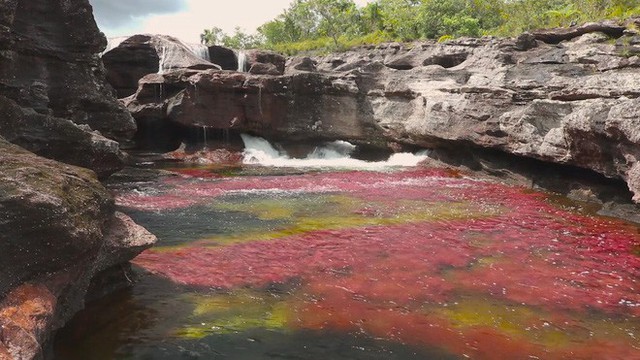
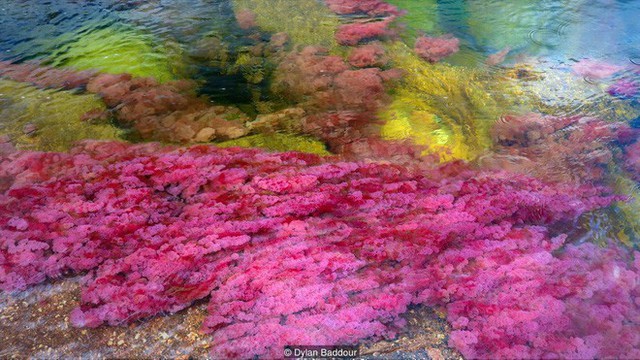
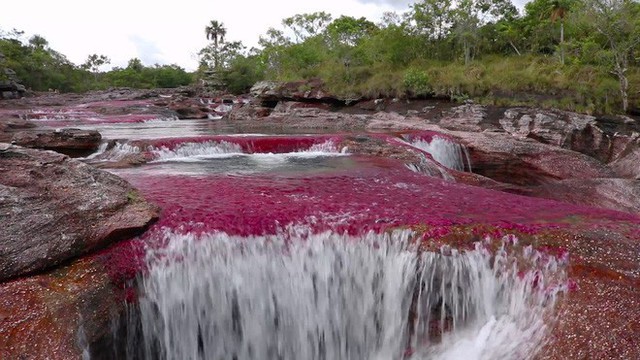
River of Five Colors in Colombia
But as soon as June came, when the dry season came with the scorching sun, the entire river suddenly changed color. The entire layer of moss covering the rocks at the bottom of the river seemed to wake up from its long rainy season sleep, happily welcoming the day with the brightest colors.
Along the water, the soft moss shows off vibrant pink, passionate red, fresh banana green, dazzling yellow and passionate orange. Some parts of Caño Cristales are a single color, while others are a riot of all the colors it has, displaying a splendor worthy of the nickname “the most beautiful river”.
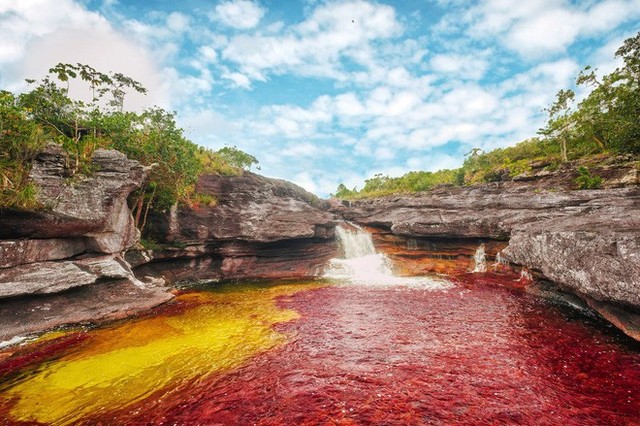
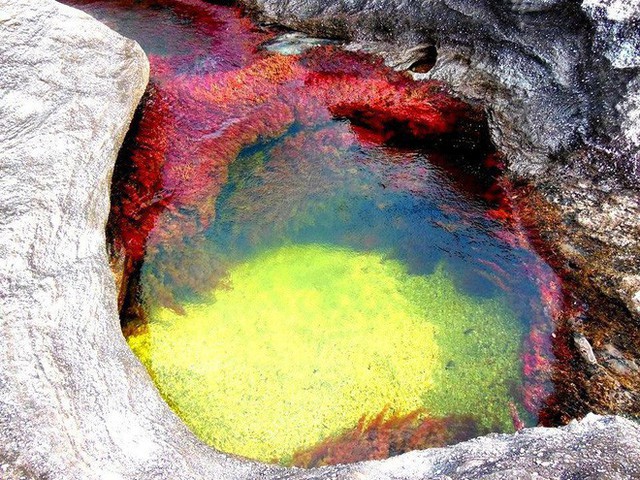
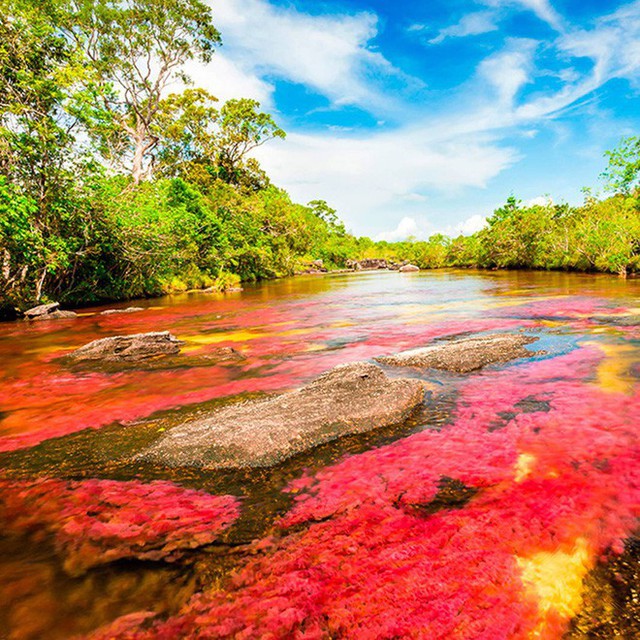
The secret of magic
In fact, the moss that covers the bottom of the Caño Cristales river is not your average aquatic moss. It is an exceptionally rare plant species called Macarenia clavigera.
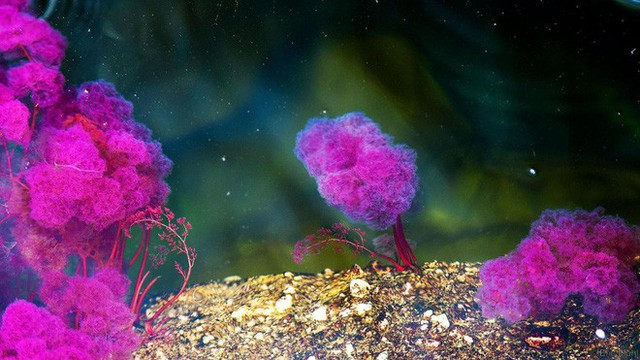
Macarenia clavigera moss, the plant that creates the magical appearance of Caño Cristales
During the rainy season, which lasts from November to the end of May of the following year, the constantly gloomy weather and rising river water levels cause this moss to silently cover itself in a dull, dark green coat. But when the dry season comes, when the river water levels drop and the sun shines, the whole thing seems to awaken, exploding with magical, enchanting colors.
The period from September to November is when the Macarenia clavigera blooms its most colorful, literally turning Caño Cristales into a living rainbow, bright and long underground.
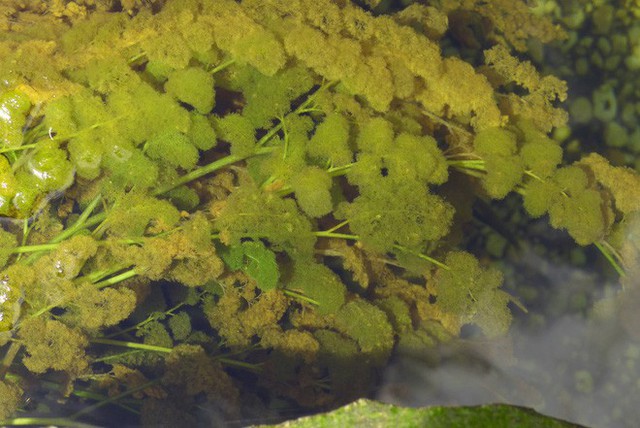

After all, Macarenia clavigera is a plant. So just like the leaves on a tree that are green in the spring and summer and turn yellow or red in the fall, they have a similar growth cycle, completely dependent on rainfall, temperature, and sunlight.
Thanks to them, each season the Caño Cristales line has a different color. It even changes its style every year, more or less unlike the years before.
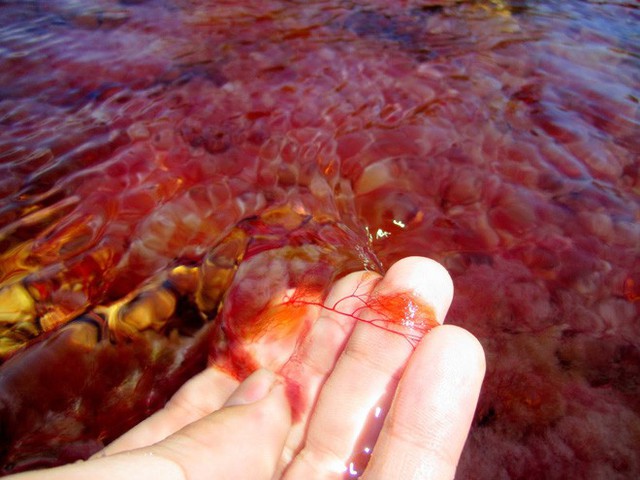
The “foundation” rock layer is up to 1.7 billion years old.
While the Macarenia clavigera is what gives Caño Cristales its beautiful appearance, the true source of the river of five colors comes from the rocks beneath the river, which provide a place for the Macarenia clavigera to grow.
Caño Cristales originates from the Guiana Shield, a 1.7-billion-year-old rock formation that stretches across much of northeastern South America. It is also known as one of the oldest geological formations on the planet.
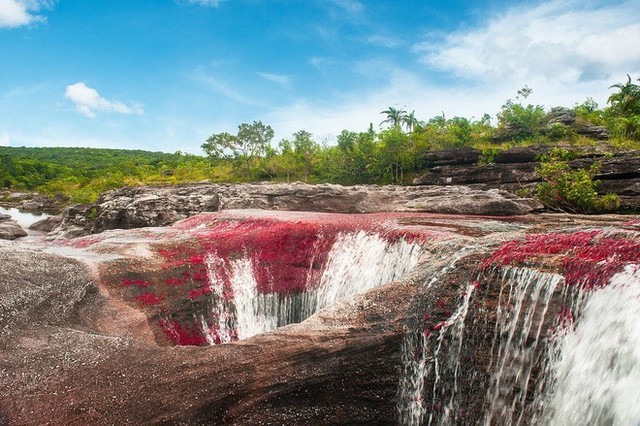
1.7 billion year old mineral-rich sedimentary rocks in Colombia are the foundation for the growth of Macarenia clavigera
It is speculated that the rocks that make up the Guiana Shield mountains may have been formed by the sediments of a series of ancient rivers. They are rich in phosphorus, iron, quartz and other minerals. In particular, the combination of these minerals is both necessary and sufficient for the growth of Macarenia clavigera.

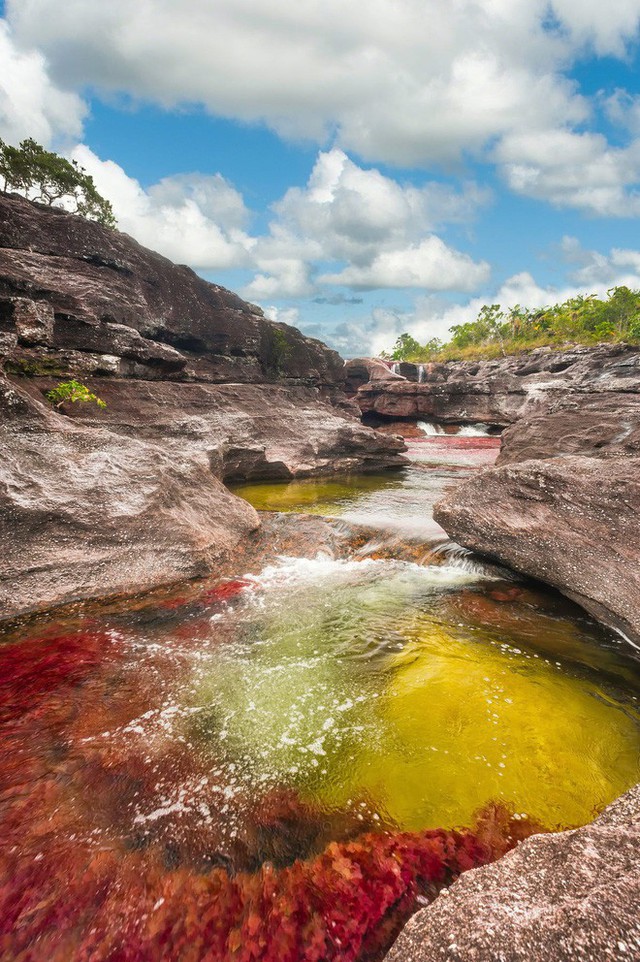
What’s more, apart from Caño Cristales, which flows through these 1.7 billion-year-old, mineral-rich rapids, there is no other place on Earth suitable for Macarenia clavigera to grow. In other words, Caño Cristales is the only Macarenia clavigera moss river in the world.
You won’t see Macarenia clavigera changing colors anywhere else except in Colombia.
The most interesting discovery of the late 20th century
In fact, before 1989, the world knew nothing about this underground paradise river. Mentioning Colombia meant mentioning the insecurity of drugs and the civil war that lasted for almost the entire 20th century.
Caño Cristales is located in the most desolate region of Colombia: La Macarena. It is surrounded by both the Andes and the Amazon jungle. But in 1989, a local journalist named Andrés Hurtado García braved the danger and ventured into the area on his own. He successfully took pictures of the natural wonder of Caño Cristales, sending them to the newspaper El Elempo, praising it as “the most beautiful river on the planet”.

From García’s discovery until 2009, La Macarena remained a dangerous area, off limits to tourists. It wasn’t until 2016, when Colombia reached a peace agreement, that it was officially opened to the public.
Before 2016, even in its peak year of 2008, La Macarena attracted only 780 visitors, of which only 16 were foreigners. However, in 2016, it welcomed a total of 16,500 visitors, of which 4,200 were foreigners, from 75 different countries.
Since then, the area that owns the most magical river on the planet has continuously welcomed tens of thousands of visitors.
To protect the fragile Macarenia clavigera ecosystem in the riverbed, the reserve prohibits visitors from bringing any products containing chemicals, such as sunscreen, skin care, makeup, insect repellent, deodorant…





